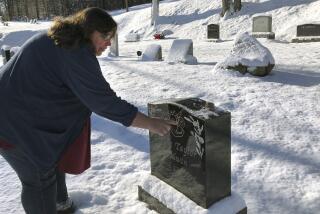Heart, stroke deaths down
- Share via
The death rates for heart disease and stroke each dropped by about 30% between 1999 and 2006, allowing the American Heart Assn. to reach its 2010 goal of a 25% reduction in deaths four years early, researchers said Monday.
“It’s one of the most remarkable achievements of modern medicine to have this kind of decline,” said Dr. Gregg C. Fonarow, a cardiologist at UCLA’s Geffen School of Medicine who was not involved in the research.
“But there is still obviously a lot of work to be done. We still have the No. 1 and 3 killers of men and women in the United States.”
The association had announced in January that it had achieved its goal for heart disease and was close to achieving its mark for stroke.
But experts fear the declines may soon be reversed.
“Although death rates are declining, several of the risk factors leading to heart disease are increasing,” said Dr. Suzanne Steinbaum of Lenox Hill Hospital in New York, an American Heart Assn. spokeswoman.
“There is an increase in obesity, diabetes and physical inactivity, which all lead to heart disease and stroke.”
The annual report, published online Monday in Circulation: Journal of the American Heart Assn., in cooperation with the Centers for Disease Control and Prevention and the National Institutes of Health, showed that death rates in the U.S. from heart disease and stroke each dropped about 5% from 2005 to 2006, the most recent year for which data were available.
Including the data for 2006, researchers found a 30.7% reduction in heart disease deaths since 1999 and a 29.2% reduction in stroke deaths.
Fonarow said those gains were fueled by better preventive care for people in high-risk groups, more effective treatments in hospitals for those suffering heart attacks and strokes, and better care to prevent recurrences after a first episode.
Nonetheless, 829,072 Americans died of heart attack and stroke in 2006, 34.2% of the total, or 1 in every 2.9 deaths. Nearly 2,400 Americans die of cardiovascular disease each day, an average of one death every 37 seconds.
Total cholesterol levels, a major risk factor for heart disease, decreased about 2% during the study period for men over 40 and women over 60, but remained steady for younger people despite the growing use of cholesterol-lowering statins.
Obesity, another risk factor, is climbing. The percentage of children in the 95th percentile for obesity rose from 4% in 1971-74 to 17% in 2003-06, the report said.
And despite widespread recommendations promoting exercise that causes heavy sweating and a large increase in heart rate, 62% of adults reported no vigorous activity lasting longer than 10 minutes per session, the researchers said.
For the first time this year, the report looked at measures of calcification or hardening of the arteries, the early stage of cardiovascular disease.
Results from two National Heart, Lung and Blood Institute studies show that in adults ages 33 to 45, 15% of men and 5.1% of women already had calcification and 1.6% had a calcification score above 100, which may indicate a significant burden of plaque.
Those with scores above 100 are seven to 10 times more likely to suffer a heart attack or stroke than those with low levels.
Measuring calcification provides a way to detect heart disease early and initiate prevention, Steinbaum said.
“Fundamentally, though, we need to figure out how to motivate and change behavior,” she said.
--






